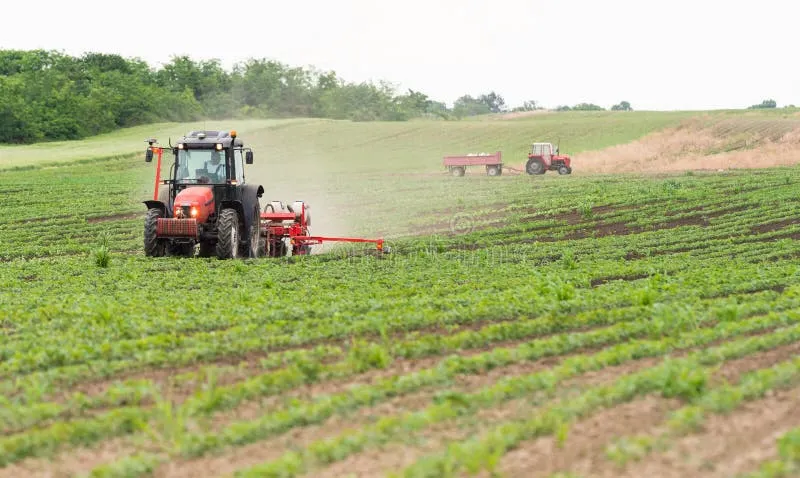Introduction
Chlorantraniliprole 18.5% SC, commercially known as Coragen, is a highly effective insecticide belonging to the anthranilic diamide class. It is widely used in agriculture to control lepidopteran pests (moths and butterflies) in crops like rice, cotton, maize, vegetables, and fruits.
Developed by DuPont (now Corteva Agriscience), Coragen is renowned for its long-lasting residual effect, low toxicity to non-target organisms, and systemic action.
Key Features of Chlorantraniliprole 18.5% SC (Coragen)
| Property | Details |
|---|---|
| Chemical Class | Anthranilic Diamide |
| Mode of Action | Ryanodine Receptor (RyR) Modulator |
| Formulation | Suspension Concentrate (SC) |
| Target Pests | Lepidopteran larvae (borers, caterpillars) |
| Crops | Rice, Cotton, Maize, Vegetables, Fruits |
| Residual Effect | 15-20 days |
| Toxicity (WHO Class) | U (Unlikely to be hazardous) |
Mode of Action
Chlorantraniliprole works by activating the ryanodine receptors (RyR) in insect muscles, leading to:
✔ Uncontrolled calcium release in muscle cells.
✔ Muscle paralysis and feeding cessation.
✔ Death of larvae within 24-72 hours.
Unlike conventional insecticides, it does not affect adult moths but disrupts larval stages, preventing crop damage.
Target Pests Controlled by Coragen
1. Rice Pests
-
Stem Borer (Scirpophaga incertulas)
-
Leaf Folder (Cnaphalocrocis medinalis)
2. Cotton Pests
-
American Bollworm (Helicoverpa armigera)
-
Pink Bollworm (Pectinophora gossypiella)
3. Vegetable Pests
-
Tomato Fruit Borer (Helicoverpa armigera)
-
Diamondback Moth (Plutella xylostella)
4. Fruit Pests
-
Mango Fruit Borer (Citripestis eutraphera)
-
Apple Codling Moth (Cydia pomonella)
Application & Dosage Recommendations
1. Recommended Crops & Dosage
| Crop | Pest | Dosage (ml/acre) | Application Method |
|---|---|---|---|
| Rice | Stem Borer | 60-80 | Foliar Spray |
| Cotton | Bollworms | 80-100 | Foliar Spray |
| Maize | Fall Armyworm | 50-60 | Soil Drench/Spray |
| Tomato | Fruit Borer | 40-60 | Foliar Spray |
| Mango | Fruit Borer | 80-100 | Trunk Injection |
2. Best Practices for Application
✔ Apply during early larval stages for best results.
✔ Use knapsack sprayer or tractor-mounted sprayer.
✔ Avoid spraying during peak sunlight (early morning/late evening preferred).
✔ Maintain proper water pH (6.0-7.0) for optimal efficacy.
Advantages of Using Coragen
1. Highly Effective Against Resistant Pests
-
Works on insects resistant to pyrethroids and organophosphates.
2. Long Residual Activity
-
Provides 15-20 days of protection after application.
3. Safe for Beneficial Insects
-
Low toxicity to bees, earthworms, and natural predators.
4. Rainfastness
-
Absorbs quickly into plant tissues, reducing wash-off risk.
5. Systemic & Translaminar Movement
-
Protects new growth after application.
Disadvantages & Limitations
1. Narrow Pest Spectrum
-
Only effective against lepidopteran larvae (not sucking pests).
2. Slow Knockdown Effect
-
Takes 24-72 hours to kill pests (not immediate).
3. Cost Factor
-
More expensive than traditional insecticides.
Safety & Environmental Impact
1. Toxicity Profile
-
WHO Class: U (Unlikely hazardous).
-
Safe for mammals, birds, and aquatic life at recommended doses.
2. Resistance Management
-
Rotate with different MoA insecticides (e.g., neonicotinoids, spinosyns).
3. Pre-Harvest Interval (PHI)
-
7-14 days depending on the crop.
Comparison with Other Lepidopteran Insecticides
| Insecticide | Mode of Action | Residual Effect | Toxicity |
|---|---|---|---|
| Chlorantraniliprole | Ryanodine Receptor Modulator | 15-20 days | Low |
| Emamectin Benzoate | GABA Agonist | 10-12 days | Moderate |
| Flubendiamide | Ryanodine Receptor Modulator | 14-18 days | Low |
| Indoxacarb | Sodium Channel Blocker | 7-10 days | Moderate |
Farmer Feedback & Case Studies
1. Success in Cotton Fields (Andhra Pradesh, India)
-
Reduction in bollworm damage by 80% compared to conventional sprays.
2. Rice Farmers in Vietnam
-
Increased yield by 15% due to effective stem borer control.
3. Tomato Growers in Brazil
-
Lower pesticide usage with Coragen’s long-lasting effect.
Conclusion: Is Coragen Worth Using?
✔ Yes, for lepidopteran pest control in multiple crops.
✔ No, for sucking pests or quick-knockdown needs.
Best Used In:
-
IPM (Integrated Pest Management) programs.
-
Resistance management rotations.
FAQs
Q1. Can Coragen be mixed with other pesticides?
A: Yes, but check compatibility (avoid alkaline solutions).
Q2. How often should Coragen be applied?
A: Every 15-20 days depending on pest pressure.
Q3. Is Coragen safe for organic farming?
A: No, it’s a synthetic chemical.
Q4. What’s the shelf life of Coragen?
A: 2-3 years if stored properly.
For expert pest management advice, consult an agronomist!
Sourashis Chanda brings readers their unique perspective on Business, Economy, Health and Fitness. With a background in Health and Physical Fitness of 2years, I am dedicated to exploring [what they aim to achieve with their writing, on the sustainable Economy of the country, various pro tips about business, latest goverment news, with some tips in health are and Fitness.





